[:HR]
Ovaj jedinstveni razgled prilika je da na zanimljiv način upoznate prošlost grada Kaštela kroz posjet nekim od najpoznatijih kaštelanskih muzeja, nalazišta i zbirki.
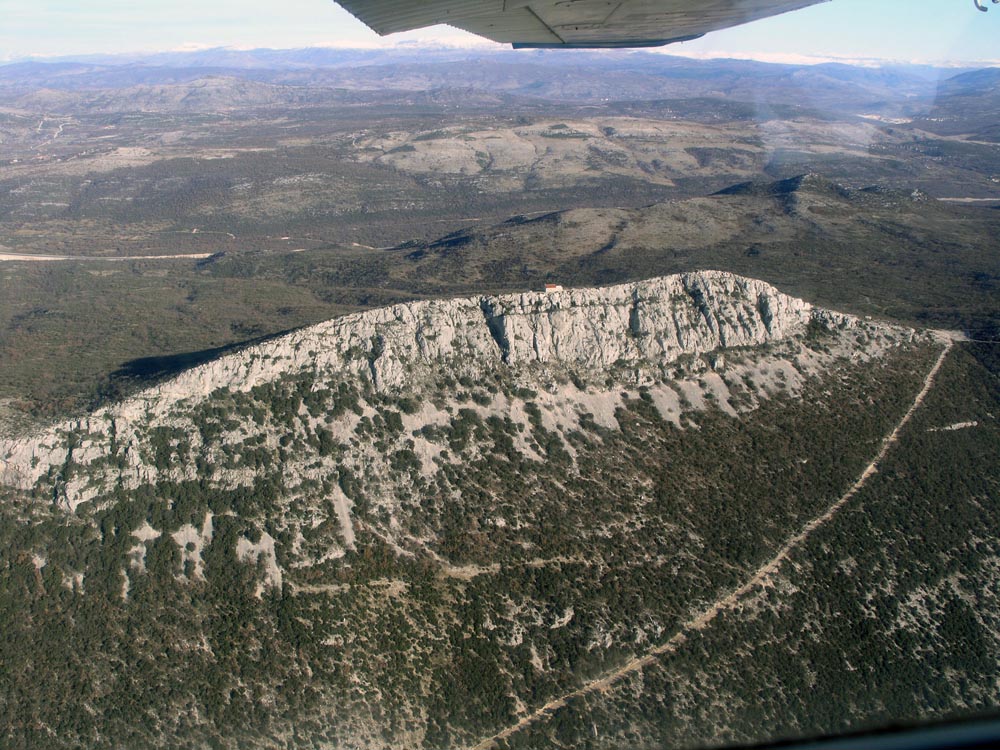
Šetnja kaštelanskim muzejima, nalazištima i zbirkama vodi nas kroz slavnu kaštelansku povijest i donosi zanimljive priče grada Kaštela. Bogatstvo kulturne baštine kaštelanskog prostora ogleda se i u radu muzeja, koji prikupljajući i prezentirajući građu doprinosi očuvanju kulturne baštine ovog prostora.
Posjetite čuvare kaštelanske povijesti i saznajte zaista zanimljive stvari o Kaštelima iz razdoblja turske najezde, lokalitetima iz prapovijesnog, antičkog i srednjovjekovnog razdoblja, poslušajte narodne priče, razgledajte bogatu riznicu crkvene baštine, saznajte više o antičkom naselju Sikuli…
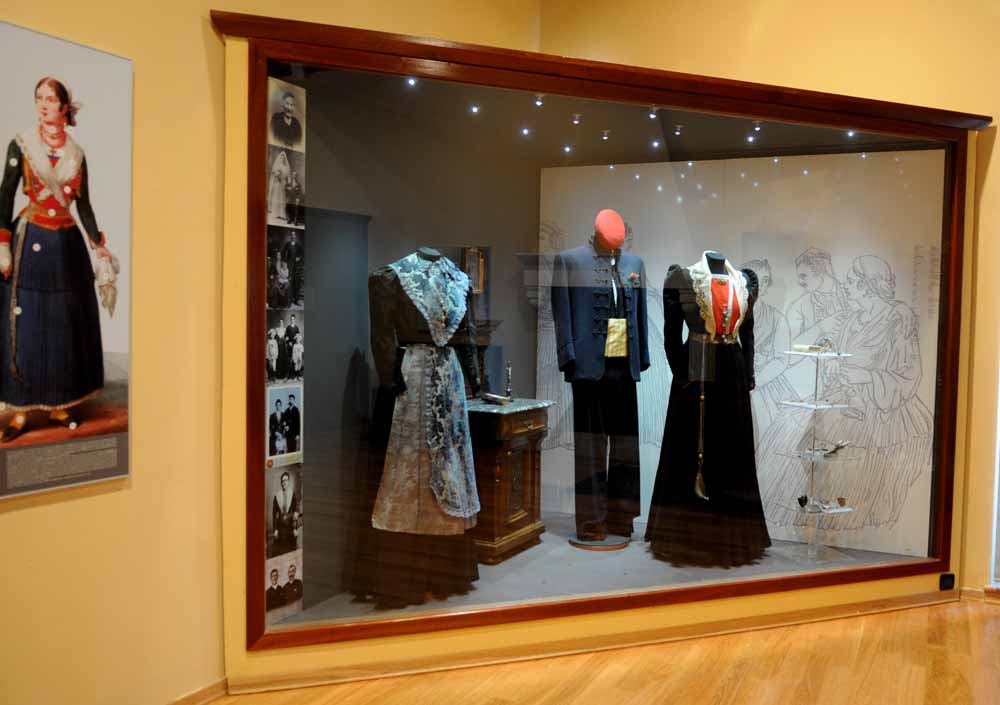
- Muzej grada Kaštela
Sjedište Muzeja grada Kaštela nalazi se u jednoj od najbolje očuvanih kaštelanskih utvrda-kaštelu Vitturi. Kaštela su drugi grad po broju stanovnika u Splitsko-dalmatinskoj županiji, sa sedam naselja razmještenih duž obale Kaštelanskog zaljeva. Svako naselje nastalo je tijekom razdoblja turske opasnosti, kada su plemstvo i Crkva iz okolnih gradova Splita i Trogira, podigli svoje kaštele u svrhu zaštite stanovništva od turskih napada. Osim novovjekih povijesnih jezgri, na kaštelanskom prostoru postoji niz arheoloških lokaliteta iz prapovijesnog, antičkog i srednjovjekovnog razdoblja.
Muzej grada Kaštela osnovan je 1999. god., a nastao je preustrojem Zavičajnog muzeja Kaštela, koji je izrastao iz rada galerije Studin (osnovane 1988. godine).
Bogatstvo kulturne baštine kaštelanskog prostora ogleda se i u radu muzeja, koji prikupljajući i prezentirajući građu doprinosi očuvanju kulturne baštine ovog prostora. Unutar muzeja djeluje arheološki, kulturno-povijesni, odjel moderne i suvremene umjetnosti, pedagoški, dokumentacijski i restauratorski odjel. Stalni postav muzeja smješten je u dvorcu (kaštelu) Vitturi u Kaštel Lukšiću., a od 2012. god. otvoren je i postav u nadbiskupskom kaštelu u Kaštel Sućurcu. Muzej brine i o dva arheološka nalazišta: ostacima antičkog naselja Sikuli u Resniku i o Mujinoj pećini u Labinskoj dragi.
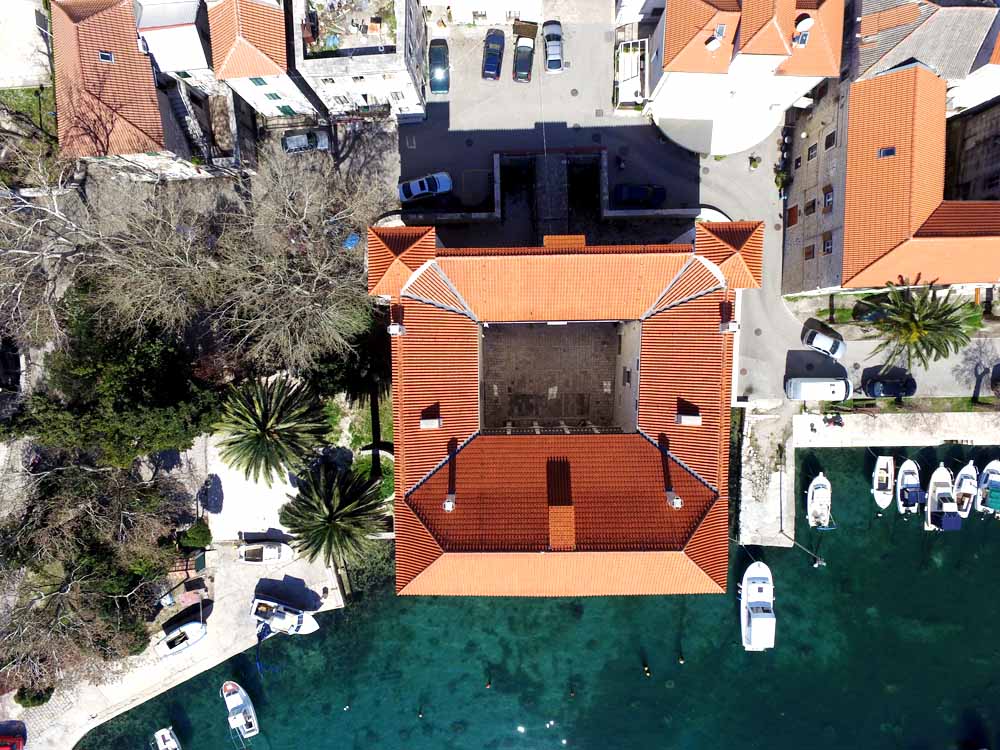
2. Kaštel Vitturi u Kaštel Lukšiću
Sam kaštel sa okolnom povijesnom jezgrom dobro je očuvan, a obnovom u razdoblju od 1993. do 2001. god., vraćen mu je izgled s početka 18. Stoljeća. Tada je bio u svojoj najreprezentativnijoj fazi i danas predstavlja kulturni centar Grada Kaštela. Tijekom istražnih radova ponovno je otkriven obrambeni jarak i kameni most ispred sjevernog ulaza. Kaštel je izgradila plemićka obitelj Vitturi, krajem 15. i tijekom prve polovice 16. st. Uslijed čestih turskih napada bilo je nužno zaštititi domaće stanovništvo, koje je do izgradnje kaštela živjelo u srednjovjekovnom selu Ostrog na padinama Kozjaka. Uz kaštel je formirano manje utvrđeno naselje sa do danas sačuvanom pučkom kamenom arhitekturom i organizacijom prostora.
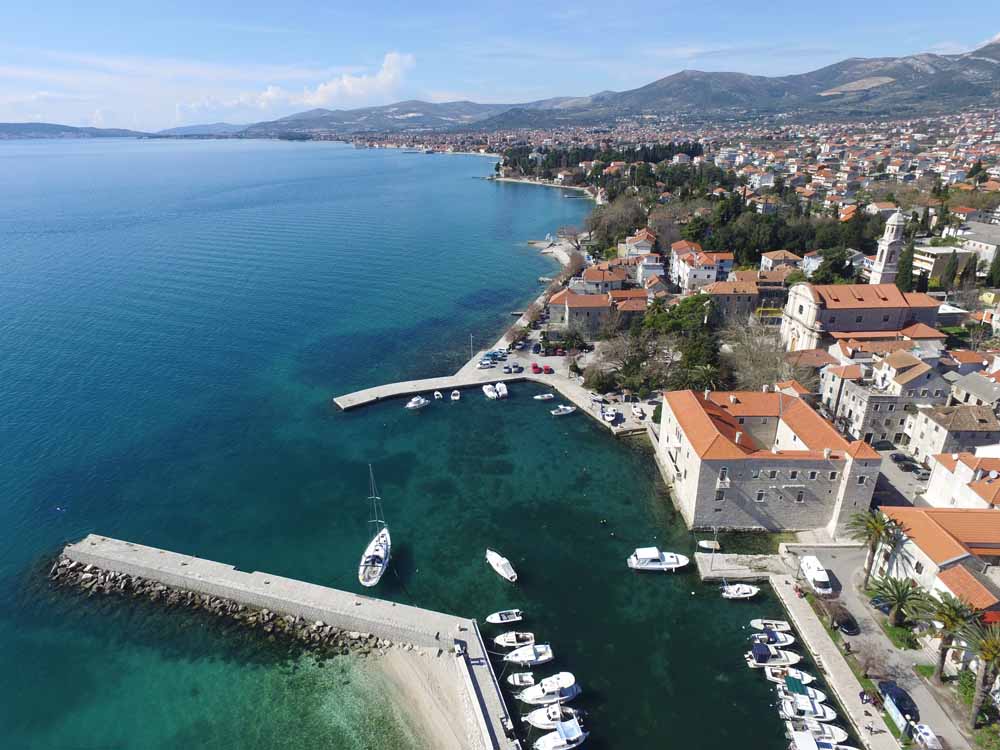
Stalni muzejski postav
Stalni postav muzeja nalazi se na drugom katu kaštela Vitturi, a otvoren je 2008. godine. Postav se sastoji iz dva dijela; kulturno-povijesnog (južno krilo) i arheološkog (istočno krilo) sa 679 izložaka. Između ova dva dijela stalnog postava nalazi se galerija u kojoj je lapidarij. Od 2013. god. u sjevernom krilu izložene su i skulpture poznatog kaštelanskog kipara Marina Studina. U kulturno-povijesnom dijelu prezentiran je razvoj pojedinih kaštela i urbanizam kaštelanskih naselja, kao i prikaz obrane od Turaka sa zbirkom oružja. U odvojenom dijelu prikazan je život plemenitaških kaštelanskih obitelji i kaštelanska narodna nošnja.
U arheološkom dijelu stalnog postava prezentirani su vrijedni arheološki nalazi iz prapovijesnog, antičkog i srednjovjekovnog razdoblja. Posebno su zanimljivi litički artefakti musterijenske kulture pronađeni u Mujinoj pećini (45000-39000 god. pr. Kr.),brojni nalazi iz antičkog naselja Sikuli i grobni prilozi iz starohrvatskih nekropola.
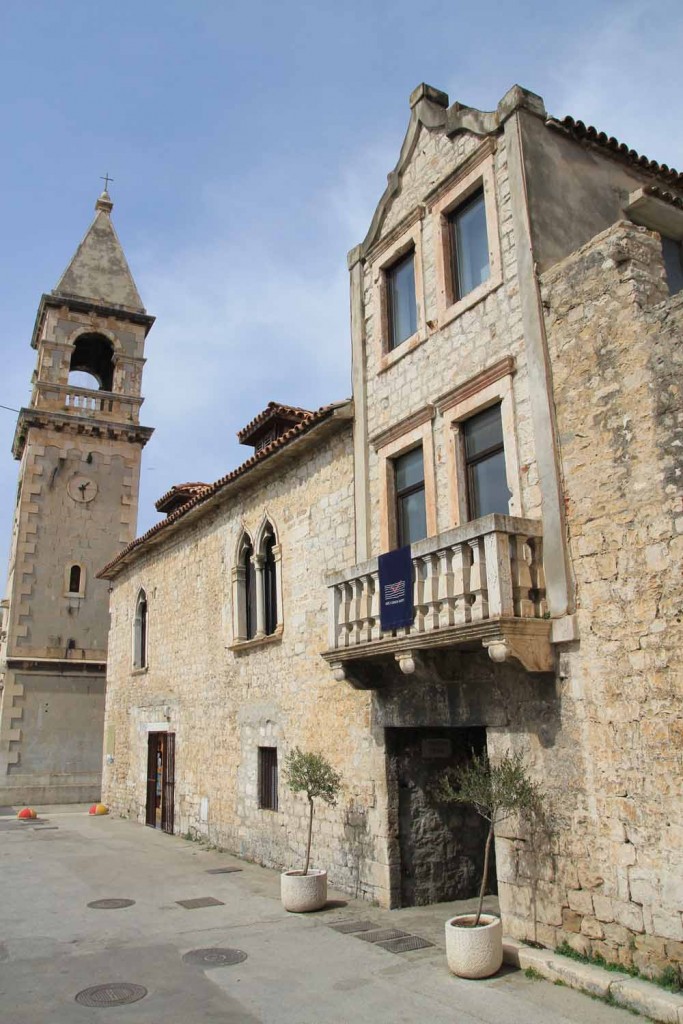
3. Nadbiskupski kaštel u Kaštel Sućurcu
Povijesna jezgra Kaštel Sućurca formira se krajem 15. st. oko kule koju je 1392. podigao splitski nadbiskup Andrija Benzi na predjelu zvanom Lučac. Uz kulu, čiji su temelji i danas vidljivi, izgradio je splitski nadbiskup Bartolomeo Averoldo 1489. god. obrambeni sklop Kaštilac u kojem je nadbiskupska palača bila centralni dio. Čitav Kaštilac bio je dobro utvrđen sa zidom od kojeg je krunište dijelom očuvano. Na drugom katu nadbiskupske palače nalaze se muzejski prostori, s bogatom kulturno-povijesnom i arheološkom zbirkom. Od 2012. godine ovdje djeluje arheološki odjel muzeja.
U susret stalnom postavu
Na prvom katu nadbiskupske palače postavljena je izložba „U susret stalnom postavu“. Sadrži dva dijela: kulturno-povijesni i arheološki sa 138 izložaka. Kroz izloženi materijal prikazano je bogatstvo pokretne kulturne baštine iz Kaštel Sućurca. Veći dio materijala potječe iz zbirke koju je prikupila udruga Podvorje, koja se do 2012. god. brinula o njoj. Dio izloženog arheološkog materijala pronađen je istraživanjima djelatnika arheološkog odjela Muzeja grada Kaštela (Krtine, Brižine i Trstenik) i Muzeja hrvatskih arheoloških spomenika (Putalj). Od eksponata u postavu izdvajaju se nalazi s brončanodobne gradine na Putalju i predromanički luk oltarne pregrade (tzv. sućuraćki luk).

4. Riznica župne crkve u Kaštel Štafiliću
U Riznici su izloženi pokretni dijelovi crkvene baštine Župne crkve Bezgrješnog začeća Blažene Djevice Marije. Uz Gospinu sliku izloženi su zavjetni darovi (tzv. Gospino zlato), filigranski ručno rađeni nakit kao i skromni, ali vrijedni liturgijski predmeti od srebra, knjige i slike. To su često uvezeni radovi venecijanske provenijencije i austrijskih zlatara te domaćih majstora iz Splita, Trogira i Kaštela. Navede predmete su nabavljale su bratovštine i darivali pojedinci.
Otvoreno: 1.7. – 31.8. / 20-22
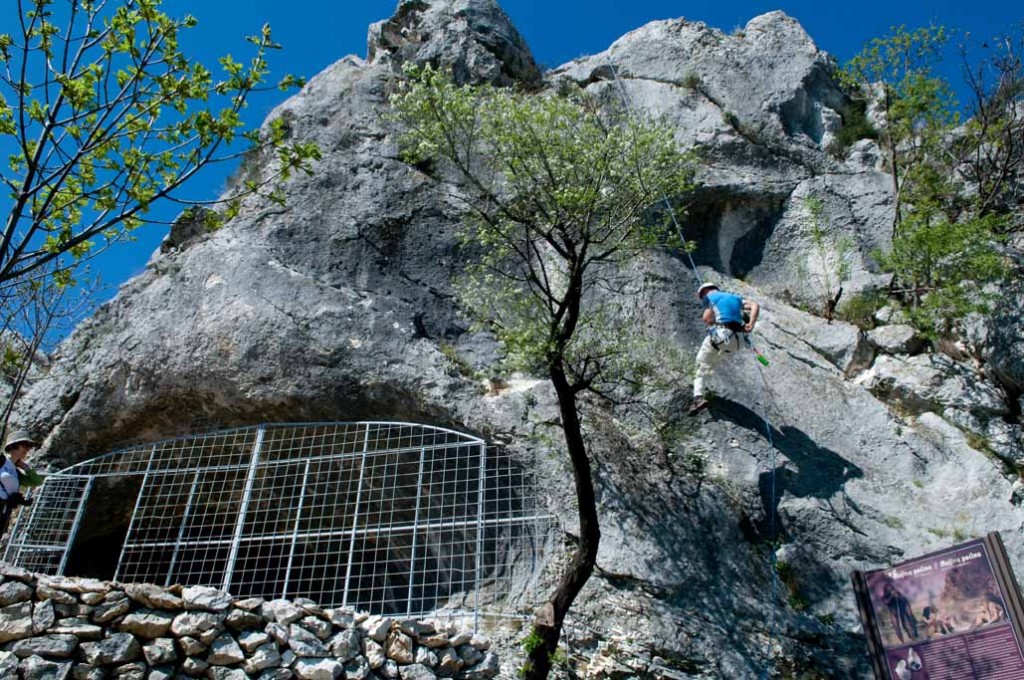
5. Mujina pećina
Tragovi prisutnosti neandertalca na ovom prostoru sačuvani su u Mujinoj pećini. Smještena je u sačuvanom prirodnom krškom okolišu Labinske drage, koja je kroz prošlost bila važna komunikacija prema zaleđu. Sa manjeg platoa ispred pećine moguća je dobra kontrola okolnog prostora, što je pračovjeku bilo važno zbog mogućnosti ranog zapažanja krda životinja koje su tada nastanjivale ovaj prostor. Sustavna arheološka istraživanja u pećini otkrila su bogate kulturne slojeve musterijenske kulture iz razdoblja od 45000 do 39000 god. prije Krista. U slojevima koji su oko 2 metra duboki pronađeni su raznoliki litički artefakti. Svjedoče o djelatnostima koje je u pećini obavljao neandertalac, a brojni nalazi životinjskih kostiju o prehrani. U vrijeme korištenja pećine klima je bila znatno hladnija, a razina mora oko 90 metara niža.
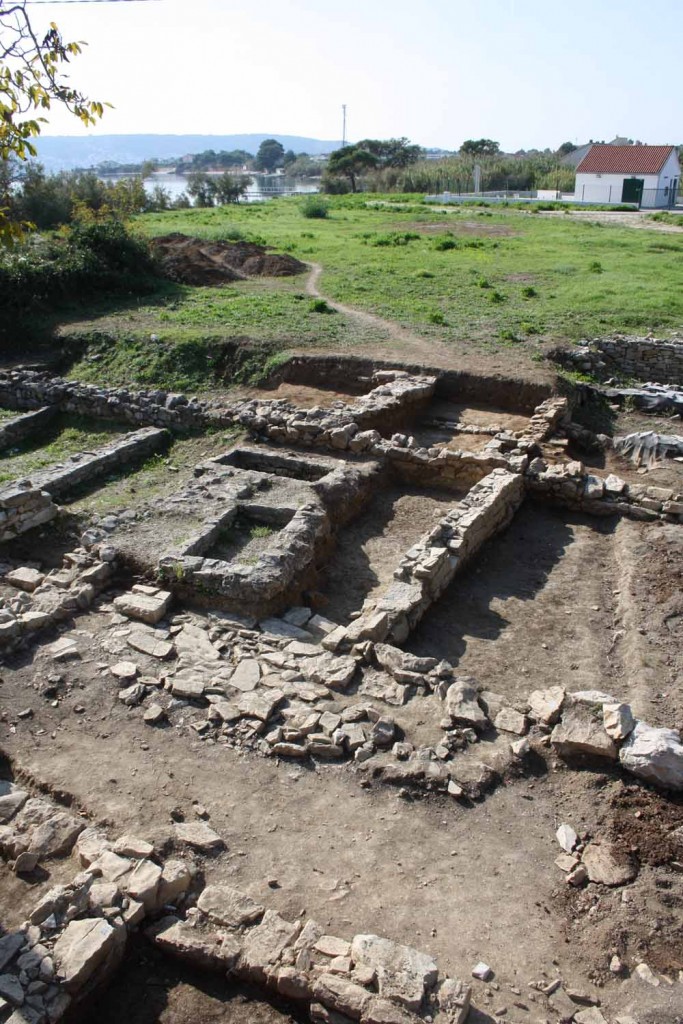
6. Antički Sikuli
Ostaci antičkog naselja Sikuli nalaze se u Resniku pored Kaštel Štafilića, uz ušće istoimenog potoka. Ono se spominje u brojnim povijesnim izvorima, a rimski car Klaudije ovdje je naselio vojne veterane polovicom 1. st. pr. Kr. Dugogodišnjim arheološkim istraživanjima utvrđeno je da se naselje prostire na površini od oko 36 000 m2 i da je osnovano u 2. st. pr. Kr. Osim ostataka pravilno organiziranih stambenih blokova i ulica, sačuvani je manji dio bedema i danas potopljena podmorska pristaništa. Osim antičkih pristaništa, u podmorju ispred ušća potoka nalaze se ostaci paleolitičkog nalazišta i neolitičkog naselja.

7. Biranj
Biranj je slojevito arheološko nalazište na istaknutom kozjačkom vrhuncu (631 m) iznad Kaštela. Ovdje se nalazi prapovijesno gradinsko utvrđenje, kasnoantički kastrum, svetište vrhunskog slavenskog božanstva Peruna i romanička crkva Sv. Ivana. Vanjski bedem prapovijesne gradine dugačak je gotovo 800 metara i lučno zatvara površinu od gotovo 73 000 m2, što lokalitet svrstava u red površinom najvećih gradinskih utvrđenja na istočnoj jadranskoj obali i zaleđu. Bedemi su suhozidni, a osipina je na pojedinim mjestima i do 12 metara široka. Arheološka istraživanja otkrila su kulturne slojeve iz neolitika i brončanog doba, sa razvijenom litičkom industrijom.
Stručno vodstvo po arheološkim nalazištima Sikuli, Biranj i Mujina pećina uz najavu.
Grupni posjeti uz najavu mogući van navedenog radnog vremena.
Web: www.muzej-grada-kastela.hr
e-mail: [email protected]
www.facebook.com/MuzejGradaKastela
Radno vrijeme:
Kaštel Vitturi (Kaštel Lukšić)
Zimsko (listopad-svibanj): ponedjeljak, srijeda i petak 9-16
utorak i četvrtak 9-19
subota 9-13
Ljetno (lipanj-rujan): ponedjeljak-subota 9-20
nedjelja 9-13
Nadbiskupski kaštel (Kaštel Sućurac)
Zimsko (listopad-svibanj): ponedjeljak, srijeda i petak 9-16
utorak i četvrtak 9-19
subota 9-13
Ljetno (lipanj-rujan): ponedjeljak-petak 9-20
subota 9-13
Stručno vodstvo po stalnom postavu uz najavu.
Stručno vodstvo po arheološkim nalazištima Sikuli, Biranj i Mujina pećina uz prethodnu najavu. Grupni posjeti uz najavu mogući van navedenog radnog vremena.
Foto: Tz grada Kaštela
Fotografije: www.kastela-info.hr
Posjetite našu Facebook stranicu i budite u toku s svim novostima!

[:en]Municipal Museum of Kaštela
The seat of the Municipal Museum of Kaštela is located in one of the best-preserved fortresses in Kaštela – Vitturi Castle. Kaštela are the second city by population in Split-Dalmatia County, comprised of seven villages spreading along the coast of the Kaštela Bay. Each village originated during the period of the Ottoman threat, when the nobility and the Church from the surrounding cities of Split and Trogir built their castles to protect the population against the Ottoman attacks. Apart from the Modern era historical cores, there is a whole range of archaeological sites dated to prehistoric times, Classical Antiquity and Middle Ages within the area of Kaštela.

The Municipal Museum of Kaštela was founded in 1999, through restructuring of the Regional Museum of Kaštela, which had originated from the Studin Gallery (founded in 1988). The richness of the cultural heritage of the Kaštela area is reflected in the work of the museum, which contributes to preservation of cultural heritage of this area by gathering and representing the material.
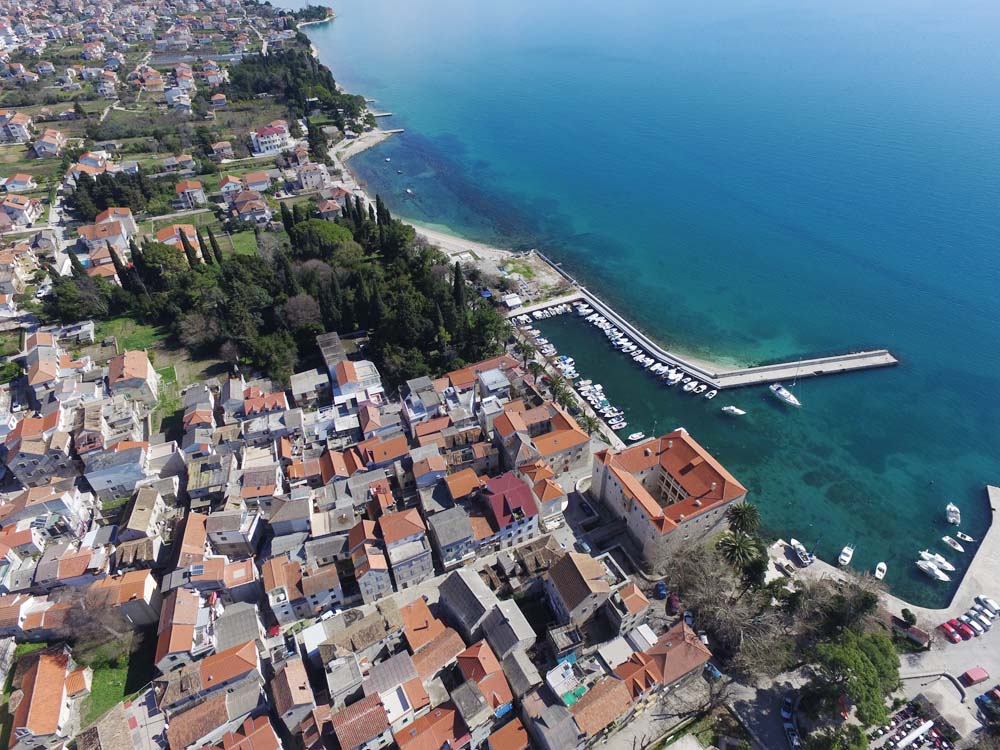
There are Archaeological, Cultural-historical, Modern and Contemporary Art, Pedagogical, Documentation, as well as Restoration and Conservation departments operating within the Museum. The permanent exhibition of the museum is located in the Vitturi Castle in Kaštel Lukšić, and in 2012, a permanent exhibition was opened at the Archbishop’s castle in Kaštel Sućurac. The museum takes care of two archaeological sites: the remains of an ancient settlement of Siculi at Resnik and Mujina cave in Labinska draga.

Vitturi Castle in Kaštel Lukšić
The castle itself with its surrounding historical core is well preserved, and in the period between the year of 1993 and 2001, its appearance from the beginning of the 18th century has been restored. The castle was in its most representative stage in that period. During the research works, defensive moat and a stone bridge in front of the northern entrance were rediscovered. The Castle was built by the noble family Vitturi, at the end of the 15th and the beginning of the 16th century. Due to frequent Ottoman attacks, it was necessary to protect the local population, which had been living in the medieval village of Ostrog at the slopes of the Kozjak Mountain before the construction of the Castle. Along with the castle, a small, fortified settlement was also formed, and its folk stone architecture and space organization has been preserved till this day.

Permanent museum display
The permanent museum display is located at the second floor of the Castle Vitturi, and it was opened in 2008. The display is comprised of two parts: cultural-historical (southern wing) and archaeological (eastern wing), with a total amount of 679 exhibits. Between those two parts, there is a gallery with a lapidarium. Since 2013, the sculptures of Marin Studin, a famous sculptor from Kaštela, have also been exhibited in the northern wing. Development of the individual castles and urbanism of the Kaštela villages, as well as the representation of defence against the Ottomans through the weapon collection, are shown in the cultural-historical part. The life of the noble families of Kaštela, as well as folk costumes, is represented in a separate part.
Within the archaeological part of the permanent exhibition, there are valuable archaeological finds dated to Prehistory, Classical Antiquity and the Middle Ages. Lithic artefacts of the Mousterian culture discovered in Mujina cave (45000-39000 BC) are of a special interest, as well as the numerous finds from the ancient settlement of Siculi and the sepulchral contributions from the Early Croatian necropolae.

The Archiepiscopal Palace in Kaštel Sućurac
The historical core of Kaštel Sućurac was formed at the end of the 15th century around the tower constructed by Andrija Benzi, the Archbishop of Split, in 1392 in the area called Lučac. In 1489, next to the tower whose foundations are still visible today, the Archbishop of Split Bartolomeo Averoldo constructed a defensive complex Kaštilac in which the Archiepiscopal Palace was the central part. Entire Kaštilac was well fortified with a wall, and its battlements have been partially preserved. On the second floor of the Archiepiscopal Palace, there are museum premises with rich cultural-historical and archaeological collections. Since 2012, the archaeological department of the Museum has been located here.
Towards the permanent display
The exhibition entitled “Towards the permanent display” has been organized on the second floor of the Archiepiscopal Palace. It is comprised of two parts: cultural-historical and archaeological, with 128 exhibits. The exhibited material depicts the wealth of the movable cultural heritage of Kaštel Sućurac. The largest part of the material originates from the collection of the association Podvorje, which was in charge of its maintenance up until 2012. Part of the exhibited archaeological material has been discovered during the excavations of the employees of the archaeological department of the Municipal Museum of Kaštela (Krtine, Brižine and Trstenik) and of the Museum of Croatian Archaeological Monuments (Putalj). Among the exhibits, the finds from the Bronze Age hillfort at Putalj and early-Romanesque arch of the altar partition (a so called Arch from Sućurac) are especially noticeable.

Treasury of the parish church in Kaštel Štafilić
Movable parts of the ecclesiastical heritage of the Parish Church of the Immaculate Conception of the Blessed Virgin Mary are exhibited in the Treasury. Votive gifts (so called Our Lady’s gold), filigree handmade jewellery, as well as modest but valuable liturgical objects made of silver, books and paintings are exhibited next to the painting of Our Lady. In most part, these are the imported works of the Venetian provenance and of Austrian jewellers, as well as of local artisans from Split, Trogir and Kaštela. These items were acquired and donated by confraternities and individuals.

Mujina cave
Mujina cave holds traces of presence of the Neanderthal men in this area. It is located within the karst environment around Labinska draga, which historically served as an important communication route with the hinterlands. For that reason, several archeological sites from different periods can be found here. In the approximate vicinity of the cave, there are also the remains of the Roman road wich connected Siculi with the hinterlands.
The cave is of small dimensions with a big entrance facing the south-east. Small plateau in front of the entrance enables good control of the surrounding area, which was important to praehistoric men because it helped them notice the animal heards that used to inhabit this area. Systematic archaeological research within the cave has encovered rich layers of Mousterian culture dated to the period from 45000 to 39000 BC. Within the 2 metres deep layers, various lithic artefacts and animal bones have were discovered. They testify about the activities performed by the neanderthals within the cave, and numerous animal bons tell us about their diet. While the cave was being used, the climate was significantly colder and sea level about 90 metres lower.

Classical Antiquity settlement of Siculi
The remains of the Classical Antiquity settlement of Siculi are located in Resnik, next to Kaštel Štafilić, at the mouth of the eponymous creek. It has been mentioned in numerous historical sources, and the Roman Emperor Claudius settled his military veterans here in the mid-1st century BC. During many years of archaeological research, it has been established that this settlement spread over the area of 36.000 m² and that it was founded in the 2nd century BC. At this time, the surroundings of the Kaštela Bay were the stage for very dynamic events related to Greeks from Issa, Romans and Delmatae. Apart from the remains of the evenly organized residential blocks and streets, a smaller part of the fortification walls and underwater docks that are today submerged into the sea have also been preserved. It is assumed that the layout was rectangular, with a surface of 3.6 ha. Residential blocks were extremely long, around 13 metres wide. The settlement was destroyed during the second half of the 1st century BC, as evidenced by the remains of the collapsed roof structures and soot found in most of the researched houses. Apart from the ancient docks, the remains of a Palaeolithic site and Neolithic settlement are also located underwater, in front of the mouth of the creek.

Biranj
Biranj is a stratified archeological site located at a prominent peak of Mount Kozjak (631 m) above Kaštela. A praehistoric hillfort, late Classical Antiquity Castrum, the sanctuary of the supreme Slavic god Perun and the Romanesque church of Sv. John are located here. The outer bastion of this prehistoric hillfort is almost 800 meters long and encloses the area of nearly 73.000 m2, which makes it one of the largest hillforts on the eastern Adriatic coast and in the hinterland. The bastion is made of dry wall and is at some parts up to 12 metres wide. Archaeological research has revealed cultular layers dated to Neolithic and Bronze Age, with a well developed lithic industry.
Working hours:
Vitturi Castle (Kaštel Lukšić)
Winter (October-May): Monday, Wednesday and Friday 9-16
Tuesday and Thursday 9-19
Summer (June-September): Monday-Saturday 9-20
Sunday 9-13
Archiepiscopal Palace (Kaštel Sućurac)
Winter (October-May): Monday, Wednesday and Friday 9-16
Tuesday and Thursday 9-19
Summer (June-September): Monday-Friday 9-20
Saturday 9-13
Tickets: Adults 15 HRK
Children 5 HRK
Expert guide through permanent display by previous appointment: 100 HRK.
Expert guide at the archaeological sites of Siculi, Biranj and Mujina cave by previous appointment: 500 HRK.
Group visits by previous appointment possible outside the stated working hours.
Vitturi castle: +385 (0) 21 260 245 (director); +385 (0) 21 260 246; +385 (0) 21 260 249 (fax)
Archiepiscopal Palace: +385 (0) 21 224 221
Web: www.muzej-grada-kastela.hr
e-mail: [email protected]
www.facebook.com/MuzejGradaKastela
[:]